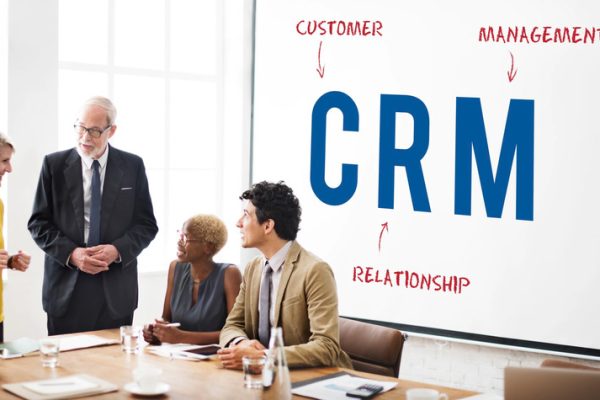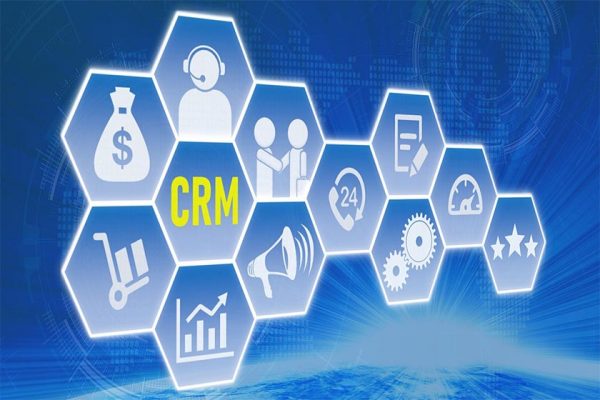If you’re in B2C sales, you have a lot to deal with: prospecting, proposal writing, pricing and contract negotiation.
In addition to these important tasks, there are also many other aspects of running a business that require your attention: marketing strategy development, finance management and human resources management among them.
To get all your tasks done properly and with maximum efficiency, you need a CRM to manage everything from lead generation through closing deals.
In this article, we will guide you how to choose the best CRM to manage b2c sales efficiently.
1. Understand Your B2C Sales Strategy
It’s important to understand your B2C sales strategy. What are you selling? What do your customers want? How do you make them buy from you instead of from one of your competitors?
This guide will help you to choose a CRM that best fits your business needs. For example, if there are many similar products on the market and customers aren’t sure where to buy them or how much they should pay for each one (or even if they need those particular types of goods).
It’s likely that an e-commerce platform would be best suited for managing this type of transaction.
However, if most people already know exactly what they want and simply need someone else to provide them with options.
So, they can make an educated decision about which product is right for them personally. Then a contact centre solution might be better suited.
Tips to understand your B2C sales strategy
- Know your target audience: Understand the demographics, needs, and buying habits of your target customers.
- Offer a unique value proposition: Identify what sets your product or service apart and emphasize it in your marketing and sales efforts.
- Optimize for customer experience: Ensure a seamless and enjoyable experience for customers at every touchpoint, from discovery to post-purchase.
- Utilize data and analytics: Track and analyze key metrics to measure the effectiveness of your sales strategies and make data-driven improvements.
- Leverage digital channels: Utilize online platforms, such as social media and e-commerce websites, to reach a wider audience and drive sales.
- Monitor and adapt to market trends: Stay up-to-date on industry developments and adjust your sales strategies as needed to stay ahead of the competition.
2. Assess Your B2c Sales Team and Lead Management Process
Assess your B2C sales team and lead management process. There are many factors that you need to consider when selecting a CRM software for B2C sales, including:
- Your company’s size and scale. While some large companies may have the resources to hire full-time IT staff, smaller businesses often do not have this luxury. If you’re looking at purchasing a hosted solution or building out your own software on top of an existing platform. It’s important that you understand how much time and attention will be required from these individuals before making any decisions about which product best suits your needs.
- Your industry’s needs. The cost of implementing a new solution can vary widely depending on what type of data is stored by each vendor (e-commerce vs retail vs healthcare). Where they plan on storing it (local vs cloud). Because different industries handle different types of information differently based on their needs. It may be worthwhile conducting market research into other companies’ experiences with each type. So that you’ll know how much money could potentially be saved by going with another option instead
3. Find the right CRM solution
CRM is a software that helps sales teams manage their sales processes. It’s used to track customer interactions, sales opportunities, and sales cycles.
It also tracks leads and contacts (the people who engage with your brand), but not just any contact or lead–they’re defined by certain criteria that can help you prioritize what to do with them in order to improve your business outcomes.
Tips to find the right CRM solution
- Define your needs: Identify the specific features and functions you require in a CRM solution, such as sales automation, marketing automation, and customer service management.
- Evaluate vendor options: Research various CRM providers and compare their offerings to determine which one best meets your needs.
- Consider scalability: Ensure the CRM solution can accommodate your business as it grows and evolves over time.
- Look for integration capabilities: Choose a CRM solution that integrates with other essential tools and systems, such as your email, accounting software, and marketing automation tools.
- Assess user adoption: Consider the ease of use and overall user experience when selecting a CRM solution to ensure high adoption rates and usage by your sales team.
- Evaluate cost: Consider the total cost of ownership, including upfront expenses, ongoing subscription fees, and any additional costs for customizations or integrations.
- Ask for references: Contact references or read reviews from other businesses to gauge the CRM solution’s effectiveness and customer satisfaction.
4. Get a Sales Pipeline Data Integration
Data integration is a key component of any B2C sales CRM, and it can take you from good to great.
You’ll need a way to import your leads into your system, which means that you need a way to collect all of the information related to each lead before they become customers.
This can include things like their name, email address and phone number; as well as their company details (what they sell). Where they work and what time zone they’re based in — all of which will help build up an accurate picture of who these people are.
- Once you’ve got this data integrated into one place (i.e., your CRM), then it’s easy for marketing automation systems like Hubspot or Marketo to automate follow-up emails based on triggers set by salespeople at various stages during the sales cycle — from pre-call meetings until after closing deals!
5. Create Automated Cycles
The first step to automating your sales process is to create automated cycles. This means that you have a set of predefined actions that are triggered by certain events, such as a buyer reaching out or submitting an order.
Tips to automating your sales process
- Define the sales process: Clearly outline each step in the sales process and determine which ones can be automated.
- Use customer relationship management (CRM) software: A CRM system can automate tasks such as lead tracking, email follow-ups, and scheduling.
- Automate repetitive tasks: Use automation tools such as HubSpot or IFTTT to automate repetitive tasks such as data entry and email responses.
- Implement chatbots: It can handle initial customer inquiries and provide quick answers to common questions, freeing up your sales team’s time.
- Use email marketing tools: Automate email campaigns and follow-ups with personalized messages and targeted content.
6. Company’s Scale
Your CRM will be more effective at managing B2C sales if you’re a small or medium-sized business, as opposed to large enterprises. Customer relationship management software is one of the most cost effective when compared to other software options for this purpose (it’s also included on our list).
Tips to consider your company’s scale.
- Define your target market: Clearly identifying your target market is essential to determine the scale of your business.
- Assess your resources: Consider your current resources, such as manpower, technology, and finances, to understand your company’s potential for growth.
- Develop a solid business plan: A well-researched and thought-out business plan will help you determine the scale of your operations, set realistic goals and allocate resources efficiently.
- Keep an eye on your competition: Understanding your competitors’ strengths and weaknesses will help you determine what is required to scale your business successfully.
- Consider scalability of your products/services: Make sure your offerings can be scaled without significant changes to their structure or quality.
- Plan for future growth: Anticipating future growth and having a plan in place will help you stay ahead of the curve and ensure that your business can scale smoothly.
- Monitor performance metrics: Regularly tracking key performance indicators (KPIs) will help you identify areas for improvement and make data-driven decisions about scaling your business.
7. Consider Your Industry’s Needs
Before you start looking at CRMs, it’s important to consider your industry’s needs. Some industries are small and don’t require a large number of users, while others have more complex business processes.
Here are some questions to ask yourself:
- What do my customers want?
- How do they interact with me and/or my company?
- What other companies in my industry are doing right now (or recently) that might be good models for me to follow if I wanted to create something similar myself.
8. Evaluate Your Current Sales Process
Look at your sales team and their interactions with each other, customers and other departments. Can you see any gaps or overlaps in tasks that need to be addressed? Do you have any questions about how well the team is working together?
Steps to evaluate your current sales process.
- Map out your sales process: Create a visual representation of your current sales process, including all steps, from lead generation to closing the deal.
- Gather data: Collect data on your sales process, such as conversion rates, average deal size, and time to close.
- Involve your sales team: Ask your sales team for feedback on your current process, what works well and what doesn’t, and for their suggestions for improvement.
- Identify bottlenecks: Analyze your data and feedback to identify any bottlenecks in the process that may be hindering performance.
- Evaluate the customer experience: Assess how your customers are experiencing the sales process and determine. If there are any areas that could be improved.
- Assess technology usage: Evaluate the use of technology in your sales process, including customer relationship management (CRM) systems and sales tools, to see if they are effectively supporting your process.
- Compare to industry standards: Research best practices in your industry and compare your sales process to those of competitors to see where improvements can be made.
9. Look at How Your Customers Behave
You can use CRM to get a better understanding of how your customers interact with your company and its products. The more you know about their behavior, the better positioned you’ll be to provide them with what they want. For example:
- Look at what kinds of interactions people have with your product or service; for example, are they using it as intended? Do they like it? Are there any problems that need fixing?
- Look at how often people interact with each other in relation to using the product/service (and whether this is positive). Do two people who both use the same thing tend not to talk about it much because there’s no need for them), or does one person always use more often than another one does?
10. Determine Where You Want to Be in the Future
When you’re choosing a CRM, it’s important to know where you want to be in the future. Do you want just one tool for all sales? Or would it be more efficient if each of your teams used their own tool and shared information?
Do you need something that can integrate with other systems such as email marketing or social media platforms like Facebook or Twitter, or is this not necessary?
Asking these questions will help guide your decision-making process. So that when selecting an appropriate CRM solution for your business, there won’t be any surprises down the road.
Your answers will also determine which features are most important to include on any given product roadmap. And, how much time should be allocated towards developing those features before moving on (or not).
Why is Hubspot the Best CRM to Manage B2C Sales?
HubSpot is a great CRM for B2C sales. It’s easy to use, has a large library of templates and an extensive support team. The user community is also very active, so there’s always someone around who can help you out if something goes wrong with your campaign or process.
HubSpot is considered one of the best CRMs for B2C sales because of the following reasons:
- User-friendly interface: It offers an intuitive, user-friendly interface that makes it easy for sales teams to manage customer data and interactions.
- Seamless integrations: It integrates with a variety of other tools and platforms, such as email marketing, social media, and e-commerce platforms, making it easy to manage the entire customer journey.
- Comprehensive data management: It provides a central repository for customer data, allowing sales teams to access a complete view of each customer’s history and interactions.
- Automated workflows: It allows sales teams to automate repetitive tasks, such as sending follow-up emails, freeing up time for more strategic tasks.
- Marketing and sales alignment: HubSpot’s marketing and sales tools are integrated, allowing for a more seamless and efficient alignment between the two teams.
- Actionable insights: It provides valuable insights and analytics to help sales teams prioritize their activities and make informed decisions.
- Affordable pricing: It offers a range of pricing options, making it accessible for businesses of all sizes, including B2C companies with limited budgets.
Conclusion
We hope that this article has helped you understand how to choose the best CRM to manage B2C sales. There are so many great options out there that it can feel overwhelming at first!
We recommend taking some time to do research on each one. If you need an user-friendly and easy to use CRM then HubSpot can be the best option for you.
Sign Up HubSpot sales CRM and boost revenue today.





